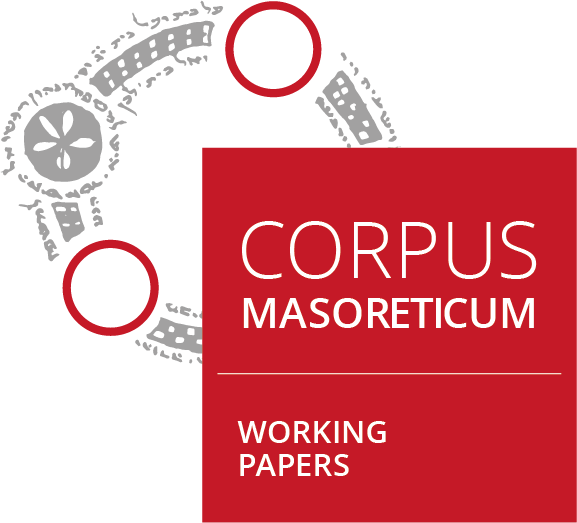About the Journal
Corpus Masoreticum Working Papers (CMWP) is the journal of the long-term project Corpus Masoreticum, which has been funded by the German Research Foundation since 2018. The CMWP publishes research articles on Hebrew Bible manuscripts’ research and Jewish Bible interpretation (Parshanut), Masorah, edition theory, as well as on topics of digital humanities and related fields in a regular, though not fixed cycle. Project members publish small to medium-sized (partial) results of the editing work and their research. However, other researchers are also invited to publish on project-related topics.
The text of the Hebrew Bible went through many stages of development, both oral and written. By the 8th century at the latest, various groups of Jewish Bible experts, the so-called Masoretes, engaged with all aspects of the biblical text in order to preserve it with the greatest care for future generations. A primary technique was to annotate the Bible with an extensive and ever-expanding corpus of text-critical notes. This corpus of annotations is known today as the Masorah. Masorah first appeared in comprehensive form in the great medieval oriental Bible codices, like the Codex Cairensis, the Aleppo Codex, and the Leningrad Codex. The Masorah also arrived in medieval Ashkenaz, the region that is now Germany and northern France. In this region, one finds lavishly calligraphic and highly decorated Bibles that display the Masorah in all kinds of fancy geometrical and figurative patterns and designs.
The aim of the Corpus Masoreticum project is the intense study of the western European (Ashkenazi) Masorah tradition between the 12th and 14th centuries, which not only differs from the oriental Masorah philologically, but also indicates in its shape and mise-en-texte as masora figurata that the Masorah in western Europe served different purposes than in the Oriental and Sephardi scholarly culture. Using exegetical and artistic means, the Ashkenazi Jews integrated the Masoretic tradition into their own rabbinic scholarly culture. This inculturation process of the Masorah is closely linked to the Christian environment (theology, iconography, illumination, architecture, and exegesis).
The results announced here shed new light on the European history of the Masoretic Bible text and its interpretation and, thus, provide important scientific impulses not only for Jewish and Christian medieval studies and (art) history. The philological work is integrated in a digital work environment in cooperation with the Heidelberg University Library (BIMA 2.0).


